As you know, we published a series of blogs comparing the RX3 and RX4 motorcycles. Those have been widely read and we’ve received many comments from you, our readers. Thanks for that, folks.
My good buddy Chris offered a brilliant suggestion a week or so ago: We ought to compare the RX4 to the Kawasaki KLR 650, he said. That’s an idea that’s so good I’m embarrassed I didn’t think of it. Chris pointed out that I had owned a KLR 650, I rode it extensively both on and offroad in Baja and here in the US, and I was in a position to make the comparison. That makes sense. It also makes sense because since the RX3’s introduction, a constant refrain from the China-bashers was that you could buy a used KLR for what a new RX3 cost. That’s not true; used KLRs generally cost less than a new RX3, but that’s neither here nor there. It might become more relevant now that the KLR has been discontinued, because it won’t be long before the only kind of KLR you can buy will be a used one.
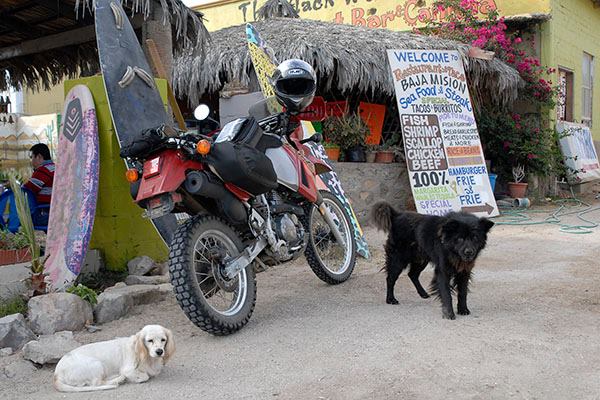
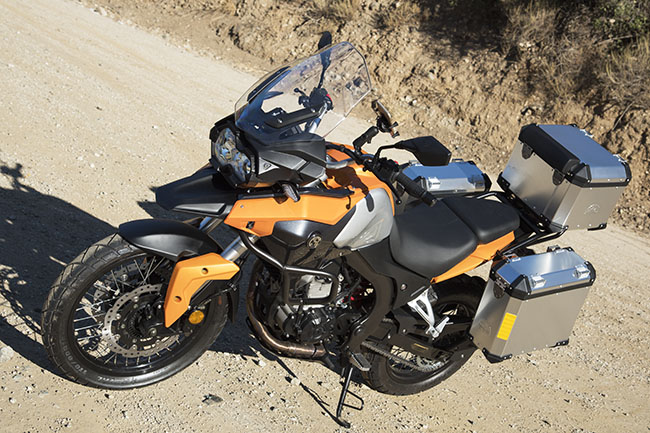
First, a bit of background. I bought a new KLR in 2006 and I rode it for roughly 10 years before selling it with 15,000 miles on the clock. That may not seem like a lot of miles for 10 years, but there were times during that period when I owned as many as six motorcycles, somewhere in there I took a year off to recuperate from a bad motorcycle accident, and after 2009 I was spending most of my seat time on other bikes as a consequence of my CSC association. But before that, a lot of my KLR time was in Baja and a good chunk of that was spent in the soft stuff.

Another bit a trivia you should know: I’m a big fan of the KLR 650. Kawasaki didn’t keep that bike in production for 30+ years because it was a turkey. The KLR 650 was (and still is) a great motorcycle. It makes way more sense for serious adventure riding than do any of the liter-plus/full-figured/stratospheric-seat-height litter of current offerings from Japan, Germany, Austria, and Italy. I say that with great confidence because when I was writing the CSC blog, I watched CSC sell boatloads of RX3 motorcycles (literally, boatloads) to guys who owned monster ADV bikes but were afraid to ride them off road. Big bikes off road just don’t make a lot of sense. Not to me, anyway.
Like I said above, my KLR was a 2006 model, which made it a First Gen KLR. There were basically two KLR iterations: Ones that burned a lot of oil, and ones that did not. Well, okay, I’m being a little sarcastic. The First Gen KLRs went from the mid-‘80s to 2007, and they ran well. In 2008, the great green Good Times Folks introduced a restyled KLR with a slightly-tweaked engine (those were the Gen II bikes, for which production concluded this year). A serious oil consumption problem ensued with the 2008 Gen II engine tweaks, which was subsequently corrected by Kawasaki. There were other minor differences: Reduced fork travel, a new dash, and the aforementioned-styling changes. And, the Big K claimed a fix for the doohickey issue (more on that in a bit). Other than that, the Gen I and Gen II KLRs are essentially the same motorcycle.
Don’t take my snarkiness as a dart aimed at the KLR. Like I said above, it was (and still is) a great motorcycle. I loved mine. And like I also said above, the KLR didn’t have a three-decade production run because it was a bad motorcycle. They are, in fact, great motorcycles. The question here is not whether or not the KLR is a good bike (it is); rather, the question is: How does the RX4 compare to the KLR? We’re getting there, folks, but let me go tangential a bit first.
So why did Kawasaki discontinue the KLR? Gresh and I wrote a couple of blogs about that and what might follow the KLR (see here and here). In my opinion, Kawasaki’s decision was most likely based on sales and profitability. Manufacturers don’t discontinue products when they are selling well and making money. Some of the self-appointed keyboard commandos filled the forums with opinions, one of which was that Kawasaki killed the KLR because it was carbureted. That’s pure Bandini, folks. CSC Motorcycles, Janus Motorcycles, and others get carbed bikes approved by EPA and CARB on a regular basis. Carbs are fine as long as the bike meets Uncle Sam’s and the Peoples Republik’s emissions requirements.
Okay, I guess that’s enough background. Let’s get to the main attraction of this piece, which is how the KLR and the RX4 compare.
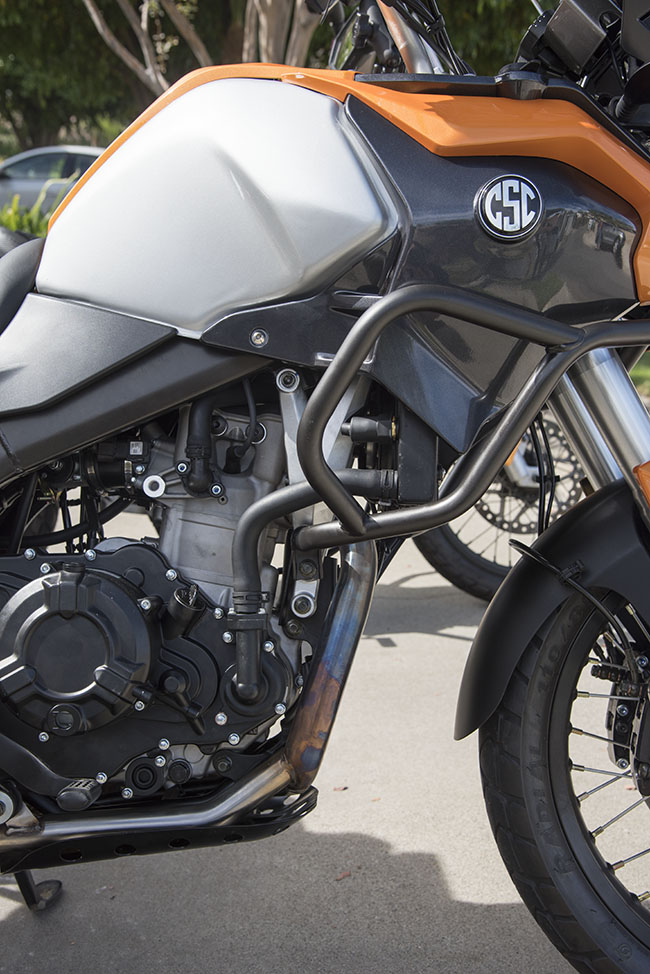
As good as place to start as any is speed and acceleration. The KLR 650 and the 450cc RX4 have essentially the same top speed, which is approximately 100 mph. Handling at top speed is another topic, and I’ll get to that in a second. From an acceleration perspective (and this is all from Berk-butt-based impressions not involving the use of a stopwatch), the KLR has a bit more grunt on the bottom end, and the RX4 pulls a little stronger near the top end. The KLR, to me, felt more torquey at low rpm (and I liked that). When you consider the two bikes’ horsepower and torque specs (assuming what the manufacturers are telling us is accurate), the reason becomes apparent. The 450cc RX4 has 40.2 horsepower and 27.3 ft-lb torque, the 650cc KLR has 36 horsepower and 33.4 ft-lb torque. More torque means more bottom end (the KLR has more torque and a stronger bottom end pull), more horsepower means more of a top end rush (the RX4 has more horsepower and feels substantially stronger than the KLR above 70 mph; much of that is also due to the RX4’s better high-speed handling).
Okay, let’s talk about, and that bring us to the doohickey business. The doohickey is the KLR 650’s spring-loaded counterbalancer drive chain tensioner (a mouthful, I know). The Gen I KLR part was a cheap stamped weldment, and it had a tendency to fail (taking the engine with it). Kawasaki never admitted it was a problem, but they improved the part for the Gen II KLR engine. Folks who were serious about their KLRs replaced the stock doohickey with a much better machined part from Eagle Mike (a great guy who is a legend in the KLR community). I replaced the doohickey at the 500-mile service on my KLR (which I did myself).
It bothered me that Kawasaki became the Good Times Ostrich on this doohickey business. I have no doubt it was a genuine weakness. There are no known comparable weaknesses on either the RX3 or the RX4 (although admittedly, the RX4 doesn’t have the miles yet to really know). What I do know is that where there were issues in the first shipment of RX3 motorcycles, CSC stepped up immediately (and publicly). I was one of the guys who communicated with CSC customers, and if you don’t believe that, read the CSC blog and buy a copy of 5000 Miles At 8000 RPM. Kawasaki ignored the doohickey issue the entire time it existed. In my book, that gives a clear advantage to CSC and Zongshen. Yeah, I’m biased toward CSC. I admit that. But facts are facts.
Back to the motorcycles…another difference is the transmission. The RX4 has a six-speed gearbox; the KLR has a five-speed. That’s perceived as a big deal, I guess, by most folks. The reality is that five gears were enough for me, but I suppose six are nicer. Back in the day I rode a lot of motorcycles with four-speed transmissions and I never felt like I was missing anything. But it’s a difference, and on this count, the nod goes to the RX4. Also, the RX4 has a gear indicator on the dash; the KLR does not. Is that a real issue? Not for me. Maybe I’m conceited, but I kind 0f know what gear I’m in all the time. But again, it’s something the RX4 has that the KLR does not. Where there is a transmission issue that’s worth noting is first gear. On the KLR it is a granny gear; it’s way lower than second. All of the gears on the RX4 (including first) are closely spaced. I would have liked the KLR better if its gears were similarly closely spaced. On the KLR, when you drop the bike into first, it’s really throwing out the anchor. On the RX4, it’s just one gear down.
As a fuel-injected bike with a smaller displacement engine, the RX4 is probably the winner from a fuel economy perspective. The Zongers tell me that the RX4 will get 65.3 mpg, but I haven’t verified that. I’m guessing I could do better (I usually do better than the manufacturer’s claims). My KLR returned a measured mid-50s mpg figure when I rode it at reasonable speeds. From a range perspective, I expect the two bikes are about the same. I could get an honest 250-miles out of a tank on the KLR. The RX4 has a 0.7-gallon smaller tank than the KLR (but it’s bigger than the RX3’s tank by one gallon), and as mentioned above it will probably get better fuel economy. There’s that business about how much fuel the RX4’s tank will actually hold when you delete the volume occupied by the fuel pump. From my perspective, if a bike can go 200 miles, that’s good enough for me (that’s the stretch south from El Rosario to the next Pemex, just north of Guerrero Negro). I’m pretty confident the RX4 will do 250 miles, and I know the KLR will.
Let’s talk handling. On the street, in the twisties, and at highway speeds and above the RX4 is the clear winner. The KLR gets very light and drifty at anything over an indicated 75 mph, and it’s downright gangly when pushed hard in the twisties. You can go faster than 75 mph on a KLR, but I didn’t feel comfortable on my KLR doing that. The RX4, on the other hand, feels rock solid up to indicated 99 mph (and it had more left at that speed; I just ran out of room). In the twisties, the RX4 is in its element. The RX4’s stock CST tires are great, and the RX4 frame, forks, rear suspension, and geometry are modern. The RX4 feels way more planted and secure in the twisties and at high speed than does the KLR (so does the RX3). The RX4’s design is nearly four decades more advanced than the KLR’s. What I’m saying here is not a slam on the KLR; that old bike did pretty well for its 30-year run.
On the tire issue, I like the CSTs that come with the RX3 and the RX4. I get great life out of the CST tires on my RX3 (usually, 6000 miles on a rear tire). The Kendas that come on the KLR are, at best, 2500-mile tires. They hook up okay, but they don’t last long. I replaced my KLR tires with Shinkos and never looked back.
On the issue of consumables, I got good life on my KLR’s chain. I had good buddy Gerry throw a new chain on the KLR at 14,000 miles, but it didn’t really need it. I don’t know about the stock chain’s life on the RX4, but the stock chain on the RX3 is a substandard component that is toast after about 5000 miles (and that, to borrow a word made popular two years ago, is deplorable). Like I said, I don’t know if Zongshen addressed this on the RX4, but if the chain is from the same company that provides the chain on the RX3, I’d expect to replace it with a real chain either immediately or after just a few thousand miles. The KLR gets my nod for stock chain life unless Zongshen has addressed this issue.
One more note on the Kawasaki’s road manners. My Gen I had this monstrous Tupperware fender that was attached high and wide on the forks. It caught any wind blowing from the side and that had a tendency to steer the bike. I think it was also one of the things that made the KLR’s high-speed handling flighty. The Gen II design changed the front fender, but I haven’t ridden a Gen II bike. I don’t know if the Gen II’s redesigned fender made the problem go away. As I said earlier, the RX4 is much better behaved at high speed.
I have not yet ridden the RX4 off road, so a lot of what I’m going to say next is speculation on my part. But it’s informed speculation. I felt my KLR did very well in the dirt and soft sand. The KLR is heavy, but it has good bottom end grunt and more torque than the RX4. That allowed me to get up to speed and on top of soft sand quickly. The KLR’s 21-inch front wheel helps, too (the RX4 has a 19-inch front wheel, and in anticipation of the obvious question, I don’t know if a 21-inch front wheel can be fitted to the RX4). The offroad keyboard commandos say the KLR is a pig in the dirt. Hey, what do I know? I thought it did well when I was tear-assing around Baja. I don’t know the suspension travel on the RX4, but I’m pretty sure it’s going to be less than the KLR. The bottom line: I think the KLR is the better choice if you are going to ride exclusively in the dirt. But then if you were going to do that you probably would not buy a KLR (there are other, better choices for dirt bikes).
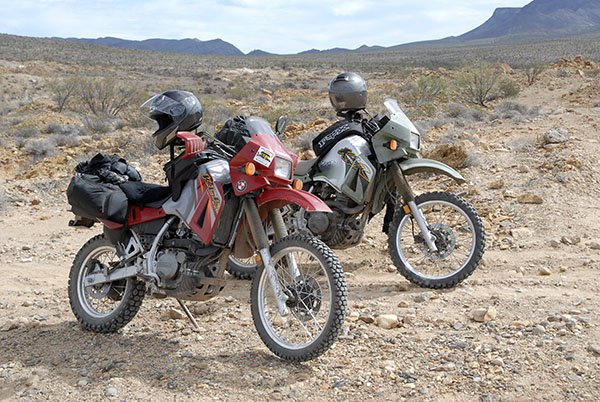
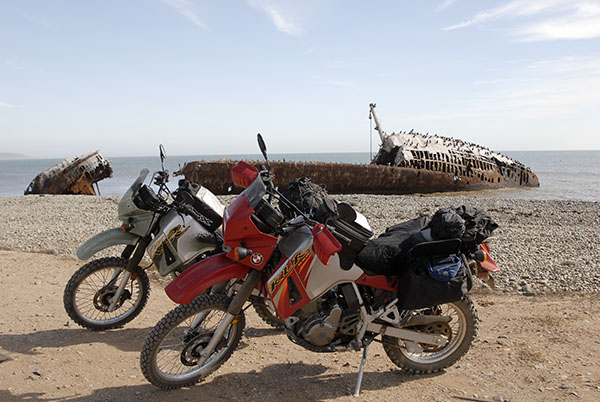
With regard to standard equipment, there’s no comparison. The RX4 is equipped with luggage, better instrumentation, dual front disks, adjustable suspension, adjustable windshield, engine guards, 300-watt alternator, accessory outlets, switchable ABS, fuel injection, and that six-speed transmission. The KLR 650 has none of these things.
I had soft luggage on my KLR, which worked well enough, but I couldn’t lock it and it gave the bike a Beverly Hillbillies kind of look (not that there’s anything wrong with hillbillies). Some people like that look. I did at the time because it was a step up from bungee cords and gym bags. But that’s old school. The RX4 luggage is a huge improvement (both the stock bags and the optional aluminum bags).
From a maintenance perspective, the RX4 gets the nod. For starters, if CSC does what they have done for all their other bikes, you’ll get a shop manual and online maintenance tutorials for free. You won’t get that with a used KLR (and you didn’t get it with a new KLR, either). That means if you own a KLR you either bought a shop manual to do the work yourself, or you went to the dealer for maintenance. I’m not a big fan of dealer technicians for three reasons: Cost, competence, and honesty.
I believe the RX4 will be easier to maintain than the KLR. I don’t know this for a fact yet, but based on the RX3’s reliability and design I suspect it will be the case. The RX3 uses threaded adjustor nuts for adjusting the valves, and I’m guessing the RX4 will, too (I haven’t removed the valve covers on the RX4 yet). I know that the KLR uses shims and buckets; that approach greatly complicates the valve adjustment process. It involves removing both cams and it makes adjustments technically challenging and time consuming (which dealers and technicians love, because you get to pay for the time).
From a price perspective, a new RX4 will cost less than what a new KLR cost. And that’s before the typical Kawi dealer’s obscenely-bloated setup, freight, and documentation fees (it’s not unheard of for dealers to routinely add $1500 freight and setup fees). Folks, from the port to just about anywhere in the US, you can ship a bike for not more than $400, so the dealer shipping fees they put on their pricing sheets are twice (or more) actual cost. And their setup fees are pure, well, you know. Ask your dealer if they do the setup themselves or if they outsource it. Most dealers go with Door No. 2. Outsourced motorcycle setups typically cost between $35 and $50 per bike, and they are done by unskilled labor (not trained motorcycle techs). I know this because I’ve been an expert witness in motorcycle lawsuits, and this is what the dealers admit when they have to tell the truth during the discovery and deposition process. How much effort goes into setup and how well is it done? Let me explain it this way: When I bought my new KLR in 2006, the windshield fell off during the 5-mile ride home. It’s a ripoff of gargantuan proportions. I’ve never paid anywhere that much, but it’s what many of the dealers ask. It’s dishonest.
Back to that earlier keyboard commando statement: You can buy a used KLR for less than a new (fill in the blanks with any brand). Regarding used KLRs (which they all will be pretty soon), there’s no argument here: A used KLR will be less expensive than a new RX4. Duh. But then you’d have a used motorcycle with no warranty. If you want to go that route, someday in the near future you’ll be able to buy a used RX4, too. A used RX4 might be even less than a used KLR. I never understood the argument that posits you can buy something used for less money than new, particularly when it’s put forth by people with the same kind of conviction they might display if they had just discovered and announced that F=ma. It’s kind of like saying things fall when you drop them. The statement about new versus used is a dumb one. It’s obvious. Buy used, and it costs less. That’s true for just about everything on the planet (except maybe some guns). Like I said: Duh.
With regard to comfort, that’s a tough one. I’d say that’s a draw, with maybe the edge going to the RX4. I felt the ergos were perfect on my KLR. I also feel that way about the RX3 and the RX4. While I’m on that topic, I’ll briefly mention the RX3S (the 380cc twin from Zongshen with ADV styling and equipment comparable to the RX3 and the RX4). The RX3S had terrible ergos. My feet felt like they were scrunched up to my butt and my hips hurt as soon as I got on the RX3S. The RX3S might be a good bike, but with the current feet/butt/handlebars relationship, it was a nonstarter for me. To go tangential again for a second, I didn’t get the naming, either. The RX3S? Is that like a plural RX3?
Back to the KLR: The stock KLR seat is way too soft, which sounds like it would be a good thing, but that squishy seat gets uncomfortable quickly. I fixed that with a sheepskin seat pad, which I also use on RX3. The stock RX3 and RX4 seats (the two bikes use the same seat) won’t win any prizes for all-day comfort, but to me they are tolerable. The KLR 650 seat sits significantly higher than the RX4. When I rode my KLR, it was a tippy-toes affair at every stop (if you play for the Knicks, this won’t be a problem, but I don’t and for me it was an annoyance). The RX4 is not nearly as tall. I liked it better from a seat height perspective. It is slightly taller than the RX3 but lower than the KLR, and way lower than the GS1200 or those Special K giraffes from Austria.
Having said the above about seat height, I will tell you that the KLR was a bit easier for me to move around in the driveway than is the RX4. Kawasaki advertised the KLR’s weight at 432 lbs, which I know is baloney (mine tipped the scales well above that number). Zongshen advertises the RX4 at 450 lbs, and as you now from reading my previous blogs, I haven’t weighed the bike. Pushing the bike around in my driveway, though, the RX4 felt heavy. Maybe that’s just be the result of me being used to my RX3. But once I was moving on the RX4, it felt way more planted and it handled way better than the KLR (both in the twisties and at high speed), and it didn’t feel heavy at all. I can’t quantify the difference; I’m only giving you my impressions.
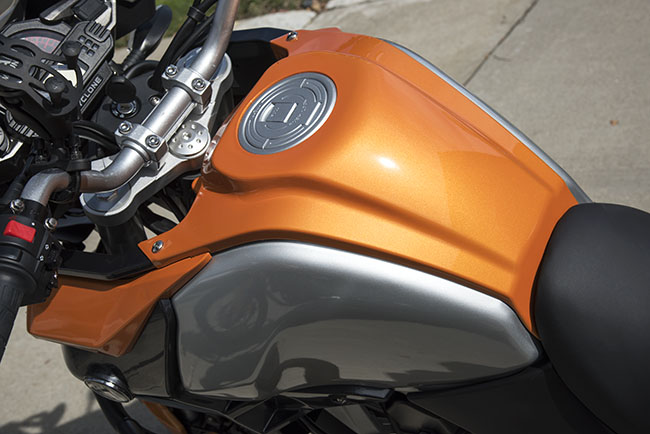
Fit and finish are unquestionably superior on the RX4. That’s not just compared to the KLR; that’s compared to any bike. Those of you who haven’t owned an RX3 may default to the typical China-bashing response. You know, the one that says: That-can’t-be-possible-it’s-made-in-China. But it is what it is. I think the finish on the RX4 is even better than the RX3. It’s very good. Little things stand out. The RX4 footpegs are nicely-cast aluminum affairs with rubber inserts; the KLR’s footpegs are cheap bent stampings with a rubber liner that wears out quickly. The RX4 has tapered handlebars and high-end switchgear; the KLR has a regular constant-diameter handlebars and cheap switches. The RX4 paint is world class (it’s deep and luxurious); the KLR used plastic with the colors molded in. The RX4 has a steel skid plate and engine guards as standard equipment; the KLR has no engine guards and a plastic skid plate. A plastic skid plate? Really, Kawasaki?
The windshield on the RX4 looks better finished, it’s adjustable, and it just flat works better than does the KLR windshield (and the RX4 windshield didn’t fall off on the way home). I know, I know, I keep coming back to that windshield falling off my KLR on the ride home from the dealer. It still pisses me off, even though I negotiated the Kawasaki dealer setup fee down from pure larceny to a much-more-modest profit contribution. What rubbed salt in that wound was that the KLR windshield mounting screws were lost when the windshield fell off, they were non-standard screws, and when I went back to the dealer they didn’t have them in stock. In my experience, that last part is a typical response from most dealers (you know, the not-in-stock thing). CSC stocks everything; that’s another plus for the RX4. While I’m on a windshield roll, there’s one more thing that I didn’t like about the KLR’s windshield. I went through five or six of the things over the life of the bike. They always developed cranks that migrated out from the mounting holes, mandating a replacement windscreen. My RX3 never did that, and I suspect the RX4 won’t, either.
Having said all of the above, I liked the looks of my First Gen KLR. Yeah, it was a Tupperware Titan, but I liked it. It was a tool that looked like a tool. It was utilitarian and honest. I think the Gen II KLR looked like Kawasaki was trying to put lipstick on a pig. I like my pigs to look like pigs. The Gen I KLR did and I liked that.
I already mentioned that the RX4 comes standard with USB and 12V power outlets, and underseat accessory plugs. The RX4 has a 300-watt alternator; the KLR alternator output is substantially lower. A funny story about CSC’s practice of putting 300-watt alternators on their ADV bikes: When I was looking at the RX3 in Chongqing back in 2014, I saw a police variant. I asked the Zongmen how the police versions handled the extra police equipment. A Zongshen engineer told me that they install 300-watt alternators on the police bikes to support the added lights, flashers, radio gear, siren, speakers, etc. Hmmmm, could CSC get that on all of its bikes? No problemo, they said. And thus the 300-watt CSC legend was born. The TT250 has a 300-watt alternator, too.
The RX4 instruments are the same as those on the RX3. While the info is more complete than on the KLR, lighting for the RX4 and RX3 indicator lights (the turn signal indicators, the high beam indicator, etc.) is too dim to read in the daytime. My good buddy Rob Morel has relatively simple fix for this problem; he removed the sort-of-translucent plastic layer between the lamps and the dash cover, and oila, now you can see the indicator lights. Zongshen ought to spec all of their bikes that way.
Neither the RX4 nor the KLR has a centerstand. Both bikes have tool kits, but both are laughable. The stock tool kits are the standard cheap items you get with most new bikes, if you get anything at all (my umpteen-thousand-dollar Harley Softail had no toolkit whatsoever, which is kind of funny if you think about it).
So there you have it. Chris, my apologies for the longwinded response to your question about the RX4 and the KLR. Thanks very much for the suggestion.
Having said all of the above, I guess the obvious question is: What would I buy? I wasn’t riding my KLR very much the last few years I owned it because I had my RX3 and TT250. I finally sold the KLR, but I miss the bike and like I said, I enjoyed it. If I had to make a choice, would I buy a new KLR or a new RX4? A motorcycle is an emotional purchase and an individual decision, and it’s a decision not usually based on logic. My belief is that most people buy a motorcycle that projects an image they want to see of themselves, which is why the industry has tended toward oversized, overpowered, and ridiculously-tall adventure bikes. KLR versus RX4? I don’t think it would be a mistake going with either bike. But I am convinced the RX4 is a much better motorcycle.
Want to see the RX3 versus RX4 comparisons? You can do so here.
Want to read about the RX3 and KLR adventures in Baja? Pick up a copy of Moto Baja!

Comp for the RX4 I saw it at a HONDA store CB500x 2019 Starts at 6,800 RX4 is 6,100 weight is 430 hp. Almost 50 same seat high 19 inch tires fronts
What an awesome blog I might have to steal my 650 V Strom and get a RX
Thanks for the honest write-up. I still own my KLR, but I haven’t ridden it in a while, mainly because I’m on the road a lot, and the RX3 is light enough that I can throw it on the back of the motorhome or on the hitch carrier on the back of my Jeep. The other reason is that the KLR windscreen keeps the wind off my chest, but there is a lot of turbulence around my helmet. Thus, it is always much more fatiguing to ride the KLR 300+ miles daily. I also don’t feel as much confidence riding the KLR off-road due to the extra height, the resulting top heavy feel, and the much more responsive acceleration especially in 1st gear. Yeah, I know, that extra torque is a good thing in the sand, but now that I’m older, I don’t have the desire to ride in the sand, and a twitchy throttle doesn’t instill confidence in my aging body. I like riding the KLR for the change of pace and added power, but only for short runs. If I’m going for a several hundred mile ride, I will always take the RX3. The KLR is a great bike though, which is why I have kept it. Gotta love Kawasaki’s buttery smooth transmissions.
Regarding the Keyboard Commando’s comments: 1.) Yes, the KLR is a pig in the dirt, as is any dual-sport compared to a dirt bike. Duh! Loved my little Suzuki 125cc 2-stroke. 2.) The influx of Chinese products into this country reminds me of the influx of Japanese products when I was a kid. We used to joke about the poor quality of things from the J. A. Pan company and their pot metal toys and other merchandise. After years of growing pains, the Japanese products became a new standard. I see a similar trend with Chinese products. Several years ago, I bought my wife a CF Moto clone of a Honda Helix 250cc scooter. The mechanicals were actually pretty good, but the plastics were terrible. They soon got brittle and before long, the scooter still ran fine, but it really looked bad. We waited months for new side panels, but they never arrived. The Zongshen bikes haven’t had that issue, and the few problems that new RX3 owners did experience, such as fading paint (I believe due to the lack of UV protection in the clear coat) were quickly acknowledged by CSC and addressed by Zongshen as early as the second shipment of bikes. I had a turn-signal switch go bad on my RX3 during the second year of ownership, and the part was on my doorstep 2-days later provided free under warranty. Hats off to the honesty, integrity, and quick actions taken by this business team to provide excellent customer service, that will hopefully result in a new standard for existing motorcycle dealerships to step up to.
Good inputs, Baja John. Thanks for the writeup.
Great comparison, Joe. As a CSC RX3 owner, I would also add that CSC’s warranty is better than any other brand. It is literally a nation-wide warranty so you can take your RX3 or RX4 to any motorcycle shop. This is a HUGE advantage for traveling riders. Plus, NO other brand backs their bikes for TWO years!
Others may bash CSC, but Kawasaki dealers aren’t universally located across the country and there is no guarantee they will have the part you need. In contrast, CSC can get any part to any cycle shop overnight.
I think a true Enduro-type bike with the 450 Zong engine would sell well. Make it 100 pounds lighter than the RX4. Something like the new Honda 450 but 1/2 the price.
Joe, I think that will happen. Probably not from Zongshen, but definitely from the third party guys. We saw a few bikes like that with RX3 engines on our ride across China.
Thank you for the comparison!
As a former owner of a KLR it was a great motorcycle despite its short comings and it had many short comings. However it was a 30 year old design and its roots go further back then that. So I have no doubt the smaller displacement RX4 will be a superior machine in almost every fashion. Speaking of fashion the First Gen KLR 650 looked like it came right out of an 80’s Chuck Norris action movie but it worked well. I never really had a problem with the ergonomics or comfort on my KLR especially after I put a Corbin seat on it. The stock one was indeed soft and abrupt but the Corbin helped a lot and it looked nice as well.
I think the only place the KLR really wins is torque. Over the years and with modern advances such as fuel injection and motor design the HP per CC ratio is at an all time high. Torque however the engineers still have not completely figured out. Torque per CC has improved but its still very much no replacement for displacement when it comes to torque.
Still a lot comes down to how that power is useable on the pavement? My KLR seemed geared and tuned just right for anything under 60 MPH. However things quickly turned for the worse when you had to super slab it and the motor seemed like it was screaming murder at 70 mph or more. I think it did amazingly smooth out at 80 mph but you were not far from redline at that point. I did eventually up my countershaft sprocket size and that helped a ton on the freeway. It was almost a real touring bike at that point but then it felt a bit to tall in the gearing on the freeway.
Yeah, the KLR is a great bike but I feel the RX4 is really where its at now days!
As for fit and finish on the Chinese stuff I bought a cheap 150cc Chinese scooter back in 2005. Fresh out the crate it looked good and ran good and initially the quality of the hardware was better then expected. However the plastic did get brittle fast and would break just looking at it. Then with 800 miles on the clock then engine sucked a valve and grenaded the engine. I gave it to a friend who had visions of rebuilding it and turning it into a racing scooter but the metallurgy of the engine was so poor it was pretty much impossible. My comments on that Chinese scooter was So Close yet So FAR. I felt it checked a lot of boxes but was just such a big piece of garbage. The bad China mojo back then was rightfully justified!
My RX3 was my first venture into an official Chinese motorcycle since I tried that 150cc scooter. It turns out a lot has happened in the world since then and it turns out at least 2 other bikes in my garage were Chinese built Honda and a Suzuki. Fit and Finish on those bikes is really first rate and meets or exceeds what is coming out of Japan. Most of those Japan bikes are actually built in places like Thailand and Vietnam. Have a few of those as well and fit and finish is also great. Case in point is with modern engineering it really does not matter where its made. A lot of the hardware on Zongshen bikes is the exact same stuff you see on much more costly bikes from other parts of the world.
When I got my RX3 I was seriously impressed. A few random things could have been done better but overall it was a nicely finished bike. 3 years later I don’t have any complaints. Some of the budget offerings like the TT250 and SG250 are a little rougher around the edges and far from being modern. However they are well built and reliable.
I really got a look at what the Chinese (Zongshen) is capable of doing with the new CSC City Slicker bike. The fit and finish plus all the hardware is outstanding and the best I have seen out of China so far. All the electric wiring is all how it should be and nicely finished connections. I think the only thing it needs is a firmware update as the stock mapping if it can be called that on an electric motorcycle is a bit heavy on doing what it takes to save battery like. Here after the Holiday I will share my experiences with CSC and let them know what I think it needs. They will probably work with Zongshen on making it a little better for our market.
I think the RX4 will come really close to how the City Slicker is built!
Thank you for your comments, Chris. I enjoyed reading them.
All KLR I ever saw came with Dunlop tires.
Hey Joe, I bought and read 5k@8k, and was wondering if theres gunna be a ride down to Baja for this bike like there was for the RX3?
Jake:
There may be. Check with CSC Motorcycles.
Thanks for buying my book!
Joe